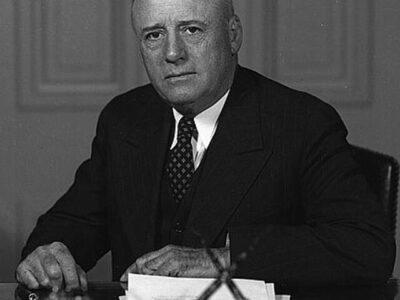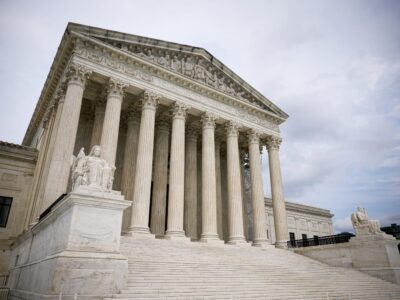Kivalina and the Courts: Justice for America’s First Climate Refugees?
It’s hard not to sympathize with the Native Alaskan inhabitants of the Village of Kivalina.
The 400 residents of Kivalina, a thin peninsula of land in Alaska jutting into the Chuckchi Sea north of the Arctic Circle, have the dubious distinction of being among the first climate  refugees in the U.S. Their town is literally melting away, a victim of twin impacts of climate change: rising sea levels and warmer Arctic temperatures that are destroying the permafrost upon which the village is constructed. Village representatives estimate that relocating Kivalina and its inhabitants will cost millions of dollars and severe social disruption.
refugees in the U.S. Their town is literally melting away, a victim of twin impacts of climate change: rising sea levels and warmer Arctic temperatures that are destroying the permafrost upon which the village is constructed. Village representatives estimate that relocating Kivalina and its inhabitants will cost millions of dollars and severe social disruption.
In 2008, the Village of Kivalina sued major oil companies and utilities in federal court in San Francisco. They alleged that defendants’ greenhouse gas emissions contribute to global warming that, in turn, is making Kivalina uninhabitable. Pursuing a claim of public nuisance, the Town of Kivalina and its attorneys seek monetary compensation from the energy industry.
A federal district judge dismissed Kivalina’s lawsuit in 2009, concluding that it raised a “political question” unsuitable for judicial resolution and best left to the Obama Administration and Congress to address. Kivalina appealed to the U.S. Court of Appeals for the Ninth Circuit, and a three-judge panel of the Ninth Circuit will hear arguments in the case today in San Francisco.
The Village of Kivalina and its residents will very likely lose its appeal, regardless of which of three available theories the Court of Appeals relies upon to reject Kivalina’s lawsuit. First, the Ninth Circuit could rule against the Village based on the same ground on which the lower court dismissed Kivalina’s case–that it constitutes a non-justiciable political question. Several other district courts around the country have reached the same conclusion in related climate change lawsuits. The key precedent to the contrary is the Second Circuit Court of Appeals’ 2009 decision in Connecticut v. American Electric Power, finding that states and private land trusts could sue utility companies to address climate change-related harm, and that their lawsuit was not barred by the political question defense. (That portion of the Second Circuit’s decision was upheld by an equally-divided U.S. Supreme Court earlier this year, in a ruling without precedential effect.)
If the Ninth Circuit finds that Kivalina’s nuisance lawsuit is barred by the political question doctrine, it will create a circuit split that will likely send the Kivalina case to the Supreme Court for resolution of that issue. But if the Ninth Circuit aligns itself with the Second Circuit and concludes that Kivalina’s nuisance lawsuit is not an impermissible political question, Kivalina is still not out of the legal woods. That’s because…
Second, the Ninth Circuit could rule that Kivalina lacks legal standing to bring its public nuisance lawsuit. Unquestionably, Kivalina can make a strong case that it has suffered “injury in fact” as a result of the climate change impacts it has experienced. And it might even prevail on the second standing criterion, that its injuries have been caused–at least in part–by the greenhouse gas emissions generated by the energy industry defendants. Far more formidable for Kivalina is the third and final component of constitutional standing law: that its injuries can be effectively “redressed” by a federal court decision. Given the ubiquitous nature of greenhouse gas emissions and the billions of contributors to climate change, that’s a hard case to make.
But even if Kivalina can surmount these threshold, jurisdictional arguments, its lawsuit seems doomed to fail on the merits. That’s because the Supreme Court recently ruled in American Electric Power v. Connecticut that public nuisance claims are an inappropriate and unavailable legal means of vindicating climate change-based grievances. Specifically, a unanimous Supreme Court held last June that public nuisance law in the climate change context has been superseded by Congressional enactment of the Clean Air Act, and by USEPA’s’ related, ongoing efforts to abate greenhouse gas emissions via regulation.
Given that strong and clear signal from the Supreme Court, it thus seems unlikely that Kivalina can prevail on the merits of its public nuisance claim. So even if Kivalina’s attorneys succeed in persuading the Ninth Circuit that the Village has legal standing and that its lawsuit is not barred by the political question doctrine, it will not win its lawsuit.
In sum, as compelling as Kivalina’s plight is–and the Village is a poster child for environmental justice claims in an climate-challenged world–its pursuit of justice via the courts seems destined to fail. Hopefully, its struggle for climate justice will eventually receive a more hospitable reception from Congress, the Obama Administration or both.







2 Replies to “Kivalina and the Courts: Justice for America’s First Climate Refugees?”
Comments are closed.